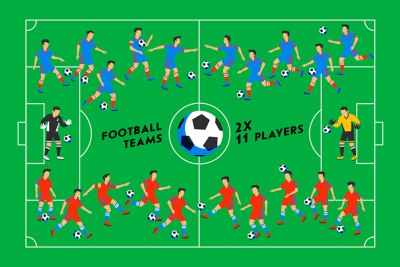 There are so many things about football that the modern fan just accepts, no questions asked.
There are so many things about football that the modern fan just accepts, no questions asked.
Why aren’t there two assistants per side of the pitch, for example, so that incidents that take place close to the touchline can be ruled upon with more clarity? Why Can’t goalkeepers just throw out all set-pieces instead of kicking? Why is each team made up of 11 players?
It is that latter question that we’re looking to answer here, though it’s unlikely that we’ll actually manage it.
The simple truth is that many decisions were taken during football’s more formative years that those responsible for didn’t feel it necessary to explain the reasoning behind. Instead we’re simply left guessing, trying to figure it out for ourselves.
Before Football
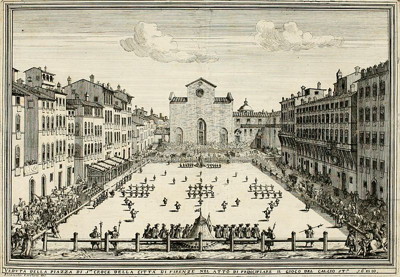
It might well feel nowadays as though football has been around forever, but in reality the sport is a relatively young one. That doesn’t mean that games that bear similarities to football haven’t been around for a number of years, of course. Indeed, the Italian sport of Calcio Fiorentino is often referred to as ‘historic football’, as though to prove the point.
It began life in Italy during the 16th century and was widely played in the country once upon a time. Many people believe that it was first place in the Piazza Santa Croce in Florence where it was named iuoco del calcio fiorentino, or ‘the Florentine kick game’. To prove its link to modern football, in Italy the association football is called ‘calcio’.
The game was typically played by rich aristocrats in Italy, with even Popes known to have taken part in Vatican City. Whilst the game died out in the 17th century, it was revived by Benito Mussolini in 1930 and is still played today, though not in quite the same violent form that it originated in.
Back to the point at hand, games of Calcio Fiorentino had 27 players on each side, with no substitutions possible. 4 of the players would be goalkeepers, 3 fullbacks, 5 halfbacks and 15 forwards. You can see, therefore, that it will have been far more chaotic than the game of football that we understand today.
The Sport Makes It To England
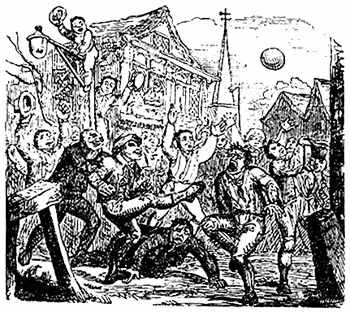 Nevertheless, something similar eventually made its way over to England in the form of what we now call medieval folk football. Sometimes it would be called folk football, others mob football and sometimes Shrovetide football, but whatever the title it was given, the rules were roughly the same wherever it was played.
Nevertheless, something similar eventually made its way over to England in the form of what we now call medieval folk football. Sometimes it would be called folk football, others mob football and sometimes Shrovetide football, but whatever the title it was given, the rules were roughly the same wherever it was played.
Whether it was actually a variation of Calcio Fiorentino or had been in England for many years is a matter of some debate, but the important point is that by the 19th century the rules had developed to mean that there would be between 15 and 21 players on either side, with players sitting out if the teams weren’t even.
Medieval football is linked to the modern day game in tentative ways, with rugby actually being far closer in origins to the sport we play today and you can read about its origins in more detail elsewhere on the site. The thing to bear in mind, though, is that there was an appetite for a game that involved kicking a ball and team sizes kept changing.
Rules Are Formalised
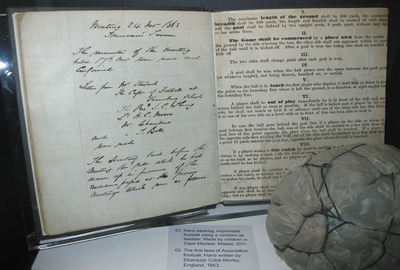
The game that we know as football now began to become more formalised as the 19th century wore on and in 1863 some official rules were put down.
These rules had a regulation in place that there would only be one goalkeeper and that their position would be fixed. It was also decided that there would be 11 players on each side.
This is the point of the story at which the reasoning behind the reduction of team size and the decision to specify 11 players becomes a little blurry.
What we can tell you is that different associations up and down the country were playing a variation of football with their own rules, so it’s likely that some trial and error played into the decision.
Is Cricket Responsible?
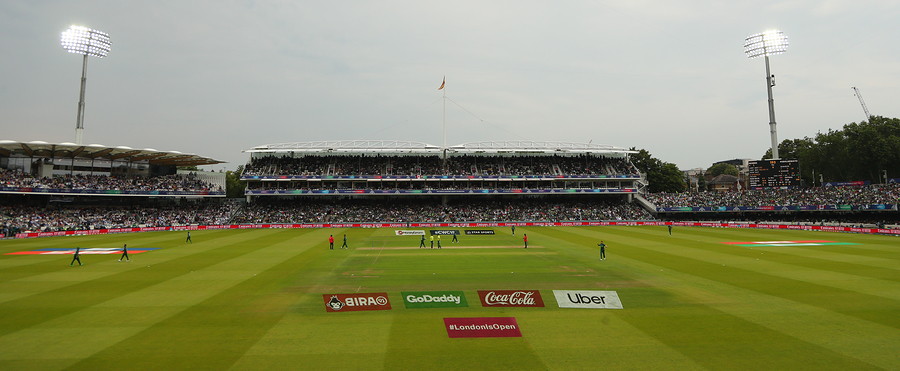
It’s entirely possible that it was simply decided by those that played football and were responsible for the decision making around the sport looked at the size of the pitch that the game was being played on and figured that 11 players on each side would be enough to ensure that the space could be covered. It could be as simple as that.
It could also be as simple as football being closely tied to cricket during its more formative years. Obviously the rules of the two games aren’t even remotely similar to each other, but football matches would often be played on cricket fields as they were the only large spaces that were available. Indeed, the Oval in Kennington hosted the world’s first international football match. Many sportsmen and teams back then also played cricket and football in different seasons
Many cricket teams also formed football sides as a way of keeping fit in the summer, with cricket remaining the more dominant sport for the early years. There are several examples of people who played for both England football and cricket teams in the late 19th century. It therefore seems unlikely that it’s a complete coincidence that cricket teams have eleven players on each side, as well as substitutes.
Is it so hard to believe that the people responsible for deciding the rules of the game might have also been high up in the powers that be of the cricket game and decided to ensure that all cricketers could play over the winter, in order to keep themselves fit? We do know that it was mostly the aristocrats who ran the Football Association in the early days.
